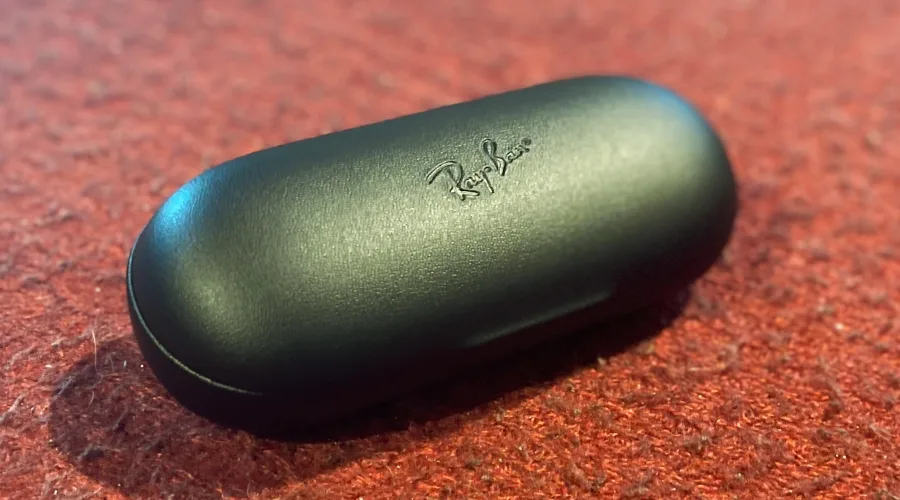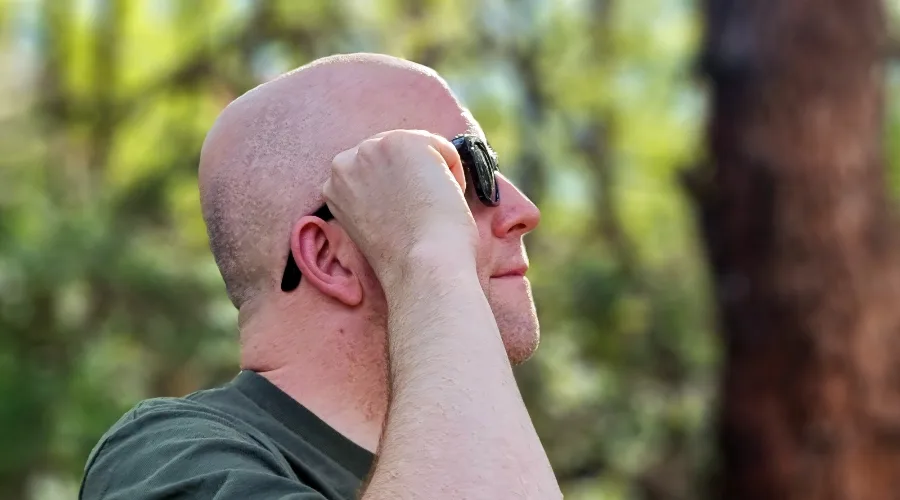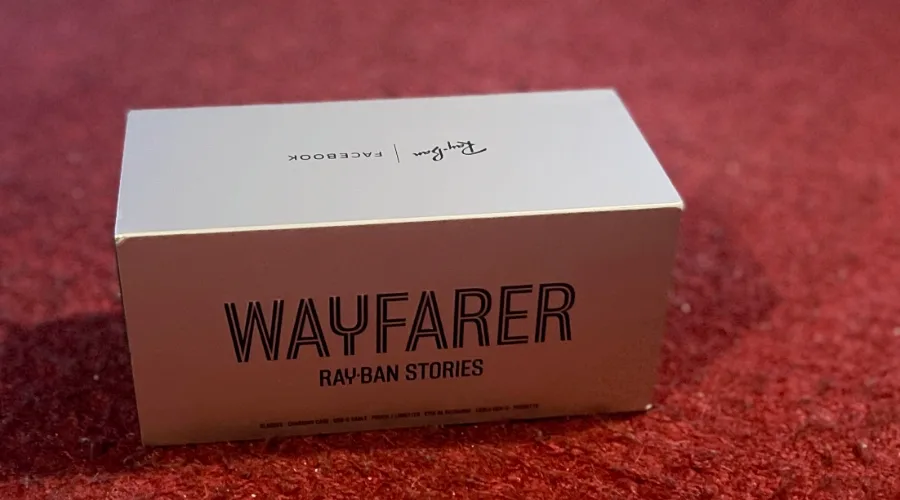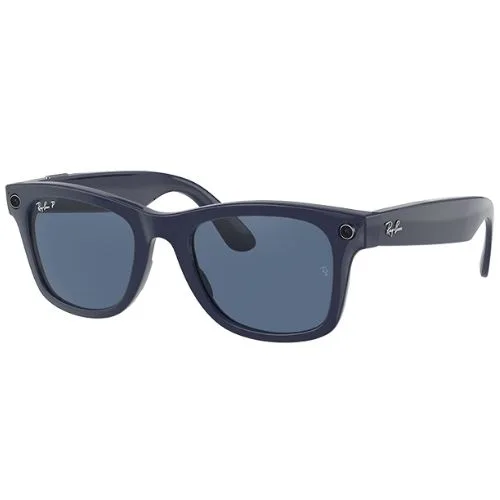Facebook Ray-Ban Stories review: Smarter sunnies, but not quite smart enough
Summary
Quick verdict: There's some smart, if not exactly new technology, in the Facebook Ray-Ban Stories sunglasses. It's great that they're stylish and can be made in prescription form, but they're also a novelty and very much a first-generation product, presuming you can get past Facebook privacy concerns in the first place.
- Genuinely stylish
- Prescription lenses available
- Some privacy concerns addressed in Facebook View app
- Can use your phone's own assistant natively
- Sound output is leaky and mediocre
- Guesswork on photo and video framing
- Resetting and fresh pairing is a chore
- Might turn you into a creep
- Facebook Assistant really doesn't do that much
Facebook took a pretty big gamble launching the Ray-Ban Stories sunglasses, and not because of the technology, which largely builds on what's been done before in smart glasses.
To put it politely, Facebook doesn't have the best reputation when it comes to consumer privacy. So launching a set of smart glasses that can take photos and videos of whatever you're looking at was, to some extent, only ever going to fan those flames.
Facebook has done some work to address those concerns by using a specific app, Facebook View, for pairing to the glasses as well as tutoring users on privacy principles, but it's abundantly clear that many will dismiss them immediately on privacy concerns alone.
The Ray-Ban Stories are fine at a technical level as semi-smart glasses. But they're also clearly a version-one attempt, with some rough edges that could be improved in future models. Their price point will likely mean that they're very much a niche product – which is exactly where most smart glasses sit, anyway.
Design: Classic Ray-Ban style impresses

Image: Alex Kidman/Finder
There's an easy way to describe the Facebook Ray-Ban Stories.
They're Ray-Ban sunglasses, available in either Wayfarer (as tested), Round or Meteor styles, with a range of actual lens colours and options for prescription lenses as well if that's what you need. This is a huge plus because so many other smart glasses – I'm looking at you, Snapchat and Google Glass – go for a more "techy" look that just ends up looking dorky.
Closer inspection shows the changes that Facebook and Ray-Ban owners EssilorLuxottica have implemented to take them from a regular pair of style sunnies into a set of smart sunnies. Above the side of each eyepiece, there's a single camera lens used for its video functions. On the right-hand side, there's a button used for video and still captures.
That right-hand armature also houses a side-mounted touch-sensitive panel for play/pause/answer and volume controls, although this isn't evident visually in any way. As such, it is possible to pick up the Ray-Ban Stories if they're already playing music and inadvertently pump the volume all the way up to maximum if you're not careful.

Image: Alex Kidman/Finder
One impressive feature in design terms here is that Facebook says that all the extra tech in the Ray-Ban Stories only amounts to a meagre 5 grams of weight compared to the same model of actual Wayfarer sunnies. That's some impressive miniaturisation!
The other important design feature of the Ray-Ban Stories is the way that they handle privacy and making it apparent to the user and the wider public that you're using them to do more than just keep the sun out of your eyes. This is done with 2 small lights on the right-hand frame.
On the inside, there's a multicoloured LED that shows pairing, resetting and recording status, while a similar white LED on the outside is meant to impart that you're taking a photo or video. You can't disable that external LED from the glasses or software, but it's not 100% obvious what it's doing, and it doesn't take a genius to suggest that a little work with a black marker or some tape could obscure it completely.
Performance: View app gives flexibility, but pairing is a chore

Image: Alex Kidman/Finder
Facebook already has apps that really like your photos and video, most obviously Instagram but also Facebook itself. It's a little surprising then that the Ray-Ban Stories require an all-new app, Facebook View, to operate. This is fundamentally part of Facebook's play to make them seem less threatening from a privacy standpoint. You can't live stream straight to any of Facebook's platforms from the Ray-Ban Stories glasses at all. Instead, you've got to pull your photos and videos off the Ray-Ban Stories into Facebook View and from there share them as you will.
One nice added benefit here is that you're not limited to Facebook's platforms in terms of where your content ends up, although you do absolutely require a Facebook account simply to set the glasses up.
Set-up is an interesting process that should be seamless for most first-time users. Having had access from before the launch, however, and testing the Ray-Ban Stories across both Android and iOS platforms, I've become aware of one way that they're distinctly a first-generation product – it's an annoying chore if you have to pair them to a new phone.
You've got to wipe the glasses by putting them into reset mode, which involves holding a tiny switch on the left arm while pressing the shutter button down about half a second after you push the switch. Then you've got to release just the shutter first and then the switch when the internal light glows orange. Get the timing right, and it'll clear the glasses (and all storage on it). Get it wrong, and you won't know. Then when you try to pair they glasses, they'll tell you that you have to go through the whole process again.
This is frustrating, and I should know because switching the Ray-Ban Stories from iOS to Android in one instance took no fewer than 8 reset attempts. I may have used some bad language at the time, which the new Facebook Assistant probably didn't pick up because it's only meant to listen for your voice when you want to record video or take pictures.
While that's a limited subset of activities for a smart assistant, you can use your phone's inbuilt assistant in the normal voice-activated way once the Ray-Ban Stories are set up. At least by telling the Ray-Ban Stories that you want it to take a picture or video, you're being rather obvious about it. It's less obvious, and honestly even internally feels a little creepy, to just tap the side of your sunnies to do so. You could just be adjusting the arm's position on your ears for comfort… or creepily videoing someone in the public space.
The other limitation here is that while you can take shots and video of what you're looking at, it's a very different proposition to using a smartphone. For a start, you're shooting with 5MP sensors, so quality isn't superb.
That's especially true in low lighting. Nobody outside of Corey Hart is likely to be wearing sunglasses at night, but even in dim light, they quickly deliver incredibly noisy shots like this one of my games shelf:

Image: Alex Kidman/Finder
The odds are that you'd wear sunglasses while it was bright outside, so you should have decent lighting, but you have no real way of telling the precise framing of your shot. Tilt your head a little, and you'll get an oddly angled shot, and you won't even know that it's that way until you offload it.

Image: Alex Kidman/Finder
I was not actually tumbling down a hill while taking that photo, I swear.
In decent lighting conditions – outside, predominantly – you can get fair photos and video, but just about any recent smartphone will shoot rings around the Ray-Ban Stories, allowing you to properly frame while doing so. Here's some sample wide and close shots to give you an idea of what's possible.

Image: Alex Kidman/Finder

Image: Alex Kidman/Finder

Image: Alex Kidman/Finder

Image: Alex Kidman/Finder

Image: Alex Kidman/Finder
The View app does a speedy job of getting shots off the glasses and onto your phone, but it does so by setting up an ad-hoc wireless network. That means your phone or tablet will have to drop off any other network it's on to manage that, and you've got to agree to join the network each time.
The Ray-Ban Stories also have an audio component, with downwards firing speakers in each arm that direct sound towards your ears. If that sounds suspiciously familiar, it's because Bose already have a product like that in the Bose Frames series. Having recently tested out the Bose Frames Tempo I put the 2 head to head… on my head.
Both sets of sunnies leak an amount of audio, and according to my family, it's pretty much a dead heat when it comes to how much you can hear if you're near someone wearing them. It'll be clear that you're listening to something at lower volumes, and at higher ones, you can make out lyrics or people speaking too.
Where the Ray-Ban Stories compare poorly against the Bose Frames is in audio quality when listening to music. The Frames can't compare to a good set of true wireless buds, but they delivered a richer and more complete sound at all volume levels. Comparatively, Ray-Ban Stories had a weaker profile, dropping detail and sounding just a little more hollow. You'd only spot that during a comparison; however, and it's not as though you wouldn't be able to make out what you're listening to on the Ray-Ban Stories. Still, if the audio component matters to you, I'd go for the Bose Frames every time.
Facebook Ray-Ban Stories Battery: Lightweight frames lead to light battery performance

Image: Alex Kidman/Finder
Facebook's claim for the Ray-Ban Stories is that they should be good for around 6 hours of playback time for audio, although clearly if you're also taking lots of video shots at the same time and firing up Wi-Fi to offload content that could drop.
My own tests over a week and a half of using the Ray-Ban Stories tend to bear that out, although 6 hours is probably an optimal case scenario. The charging case gives you 3 additional charges via a magnetic connector, although that does mean that if you lose or break the case, the Ray-Ban Stories are going to be useless. Again, I'll point to the Bose Frames here because they use a USB-C connector that is easily replaceable. Again, Facebook could change this up for Ray-Ban Stories v2, if they ever emerge.
The other power issue here is one of remembering to switch the Ray-Ban Stories off. Perhaps it's my fault for getting so very used to most true wireless buds that switch off after a while if they're not in your ears, but there's no such feature on the Ray-Ban Stories. They should switch off when folded up, but this didn't always happen during my testing period. Several times I'd pick the Ray-Ban Stories up from a bench-top and put them on, only to find they were flat. Could this be a firmware solved issue? Probably, and hopefully it will be.
Should you buy the Facebook Ray-Ban Stories?
- Buy it if you want a set of smart glasses that have definite style.
- Don't buy it if you don't want to appear a little creepy in public.
"Possibly" is the key word there. Having worn them out and about a few times over the past week and a bit – bearing in mind the constraints of the pandemic – I've had more than a few instances where I've felt personally uncomfortable, even though I wasn't doing anything in a photo or video sense that would in any way invade anyone's privacy. Well, unless you're a gum tree. Sorry, gum trees, I didn't ask about taking your photo.
At a technology level, and for their price, the Ray-Ban Stories are a bit of a novelty item. If you're after just the audio side, the Bose Frames are easily superior, but they don't quite have the same style cachet as Ray-Ban does.

Image: Alex Kidman/Finder
Facebook Ray-Ban Stories Pricing and availability
Price
The Ray-Ban Stories sell in Australia with pricing starting at $449.Where to buy
How we tested
The writer tested the Ray-Ban Stories for a week and a half, wearing them as often as possible to test out comfort, camera and audio features. Photo and video subjects were carefully selected to keep privacy in mind because from a distance, you really can't pick them from regular Ray-Bans and the lighting is not obvious.
Specifications
Build
Specs
Images: Alex Kidman
More Finder reviews
- Apple HomePod 2nd Gen review: Yes, it’s better
- Creality Ender-3 S1 Pro Review: Plenty of creative potential, but you’ll need patience too
- Apple Mac Mini M2 Pro review: A tale of two computers
- Apple MacBook Pro M2 Max 16-inch review: Next-level power
- HTC Vive XR Elite: Is this the perfect mix of Flow and Pro?
